The “Urban Alliance” is a mixed-use architectural design seamlessly integrating Industry 4.0 principles, featuring advanced photovoltaic production units. This visionary space harmoniously combines sustainable energy practices with residential and commercial areas, embodying a forward-thinking urban landscape that fosters eco-friendly living and innovative business practices. It exemplifies a holistic and tech-driven approach to urban planning. The project is located in Sant Adrià de Besos, Barcelona. Sant Adrià de Besos is predominantly an industrial zone with minimal high rise buildings placed in its context, as well as scarce natural vegetation.
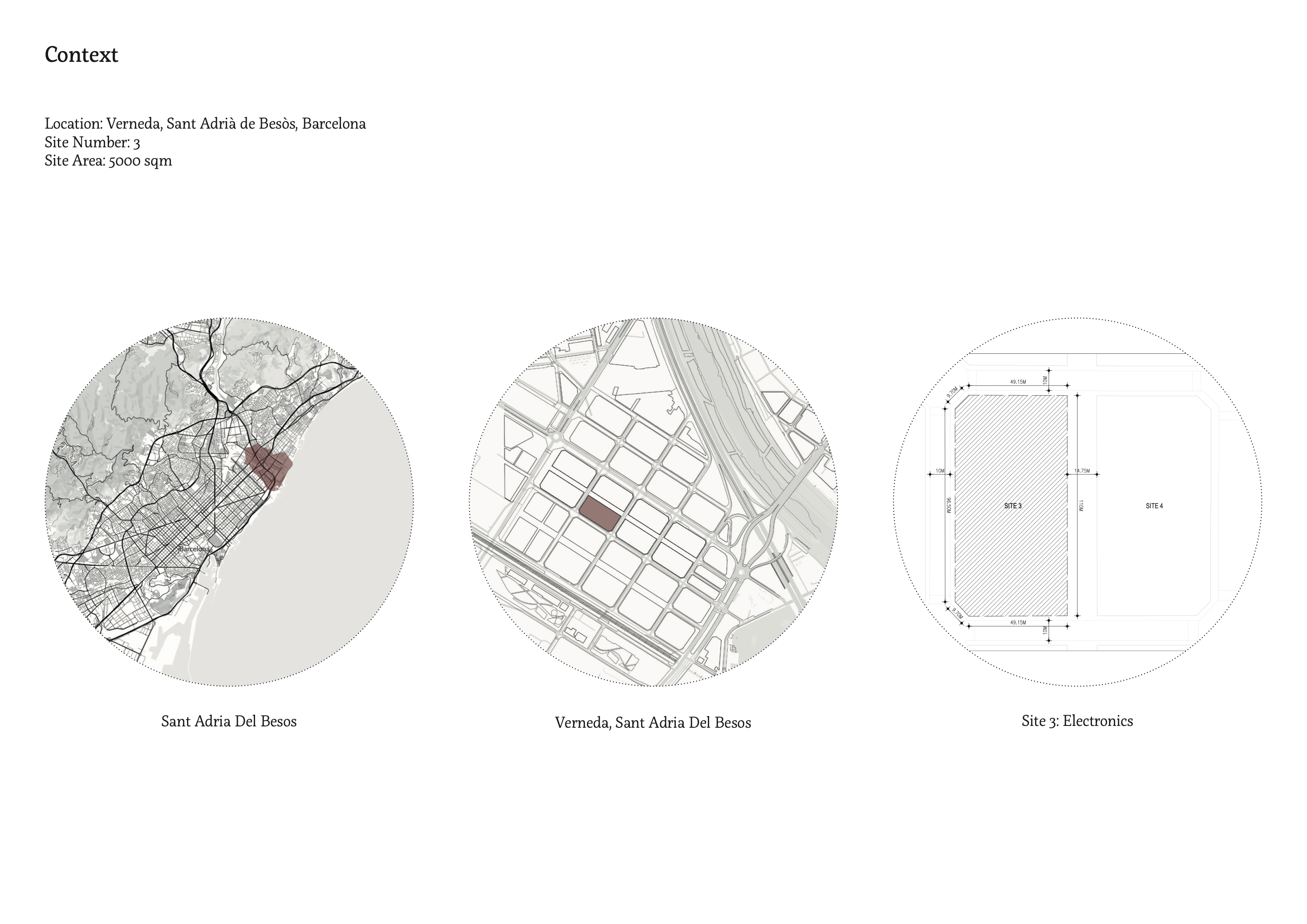
Form Development
The built form is designed on the basis of passive design strategies. To begin with, the entire built form was oriented along the north-south direction. This was done to maximise the amount of day-lighting that occurs in all spaces. The building blocks are then staggered to further improve day-lighting as well as facilitate natural ventilation. The built form is staggered in both the horizontal and vertical axis to create opportunities for passive design strategies. Green spaces are also utilised to create a more ambient micro climate on site and within the built forms. Passive design strategies like natural ventilation, natural day-lighting, trombe walls for thermal mass, perforated wall for ventilation, secondary permeable facades for diffused lighting, skylights for lighting and ventilation and green roofs are utilised in the design.

Structural Development
The project is organised in a 5 meter by 5 meter grid. This facilitated the placement of the circulation cores, columns, and beams. The circulation cores act as the main rigid elements that support the rest of the structure utilising CLT as the structural form. A series of GLT columns and beams are the primary structure system that follow the 5×5 grid. On the ground floor of our industrial space, the columns are spaced at 10 meters with dimensions of 50cmx50cm, the beams run on 2 directions and intersect at ever 5 meters, each with a height of 1.2 meters and width of 25cm. On top of the industry, the residential spaces are also aligned on the 5×5 grid, and the columns are spaced at every 5 meters with dimensions of 25cmx25cm. The beams are organized just as in the industry, but with a height of 50cm*.


Industry Design
The industry is designed to be on the ground floor. The design is focused on the manufacturing of pv panels which can be distributed locally. The industry focuses on maintaining a clean and simple circulation between production line, offices, workshops, research spaces and storage spaces. Apart from the industry space, commercial activities are incorporated along a pedestrian network on the eastern side of the side. The design of the commercial spaces is curated to create a seamless harmony between the pedestrian network and the commercial spaces.
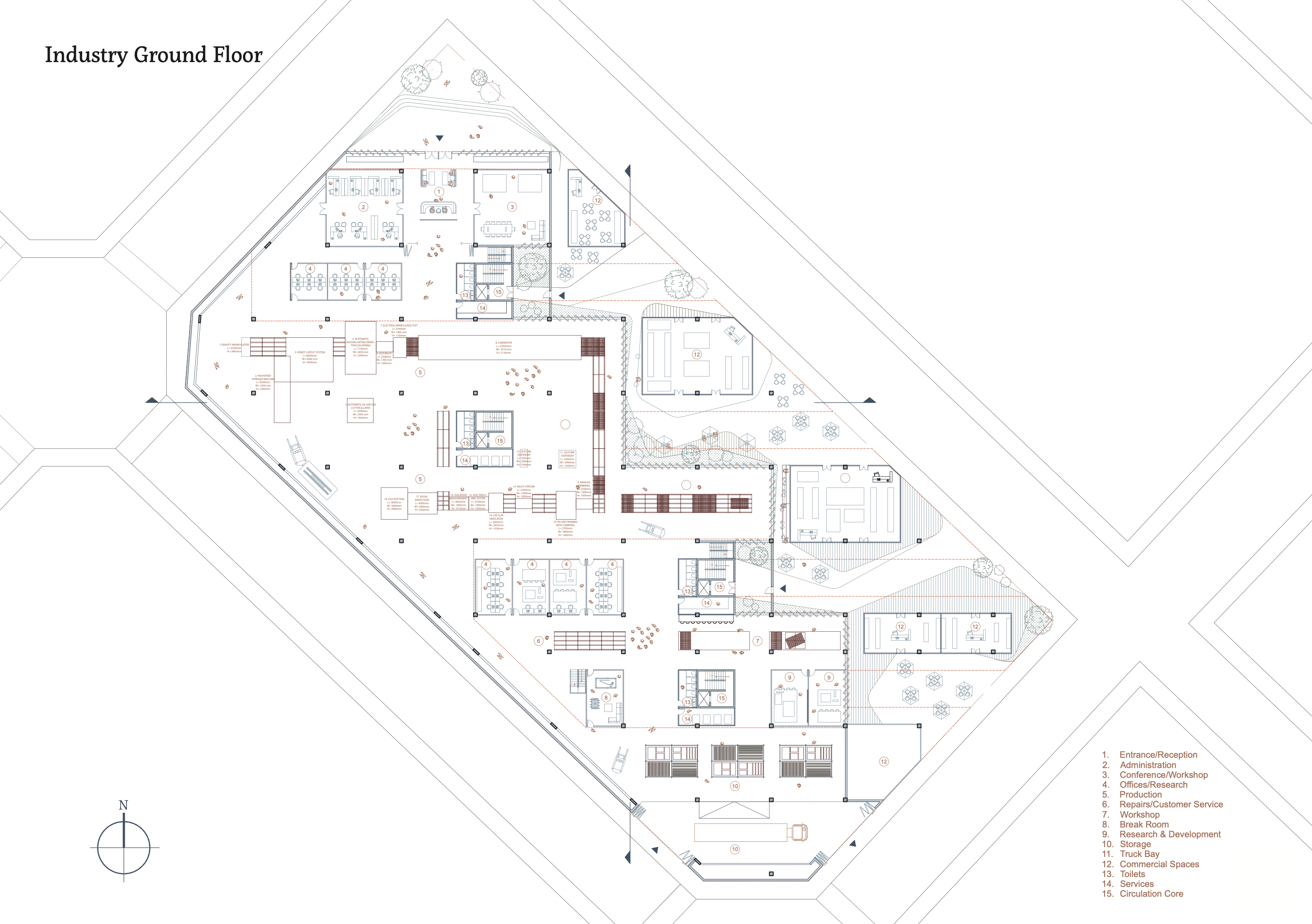
The production line was designed upon a coherent understanding of the procedure of pv panel production and all the processes required.
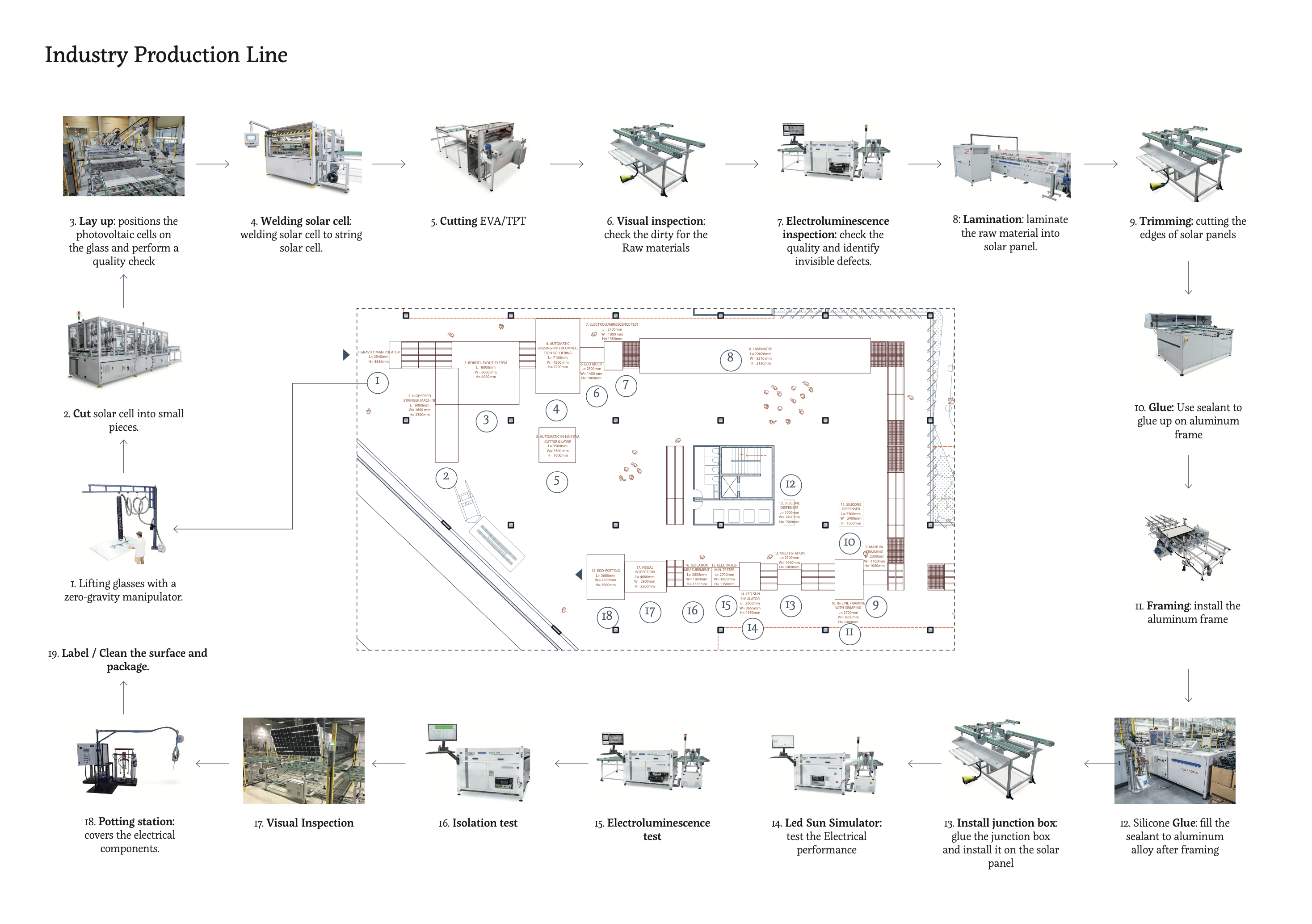
Apart from having office and workshop spaces on the ground floor additional spaces for offices and research are incorporated on a mezzanine level to accomodate a larger number of people.

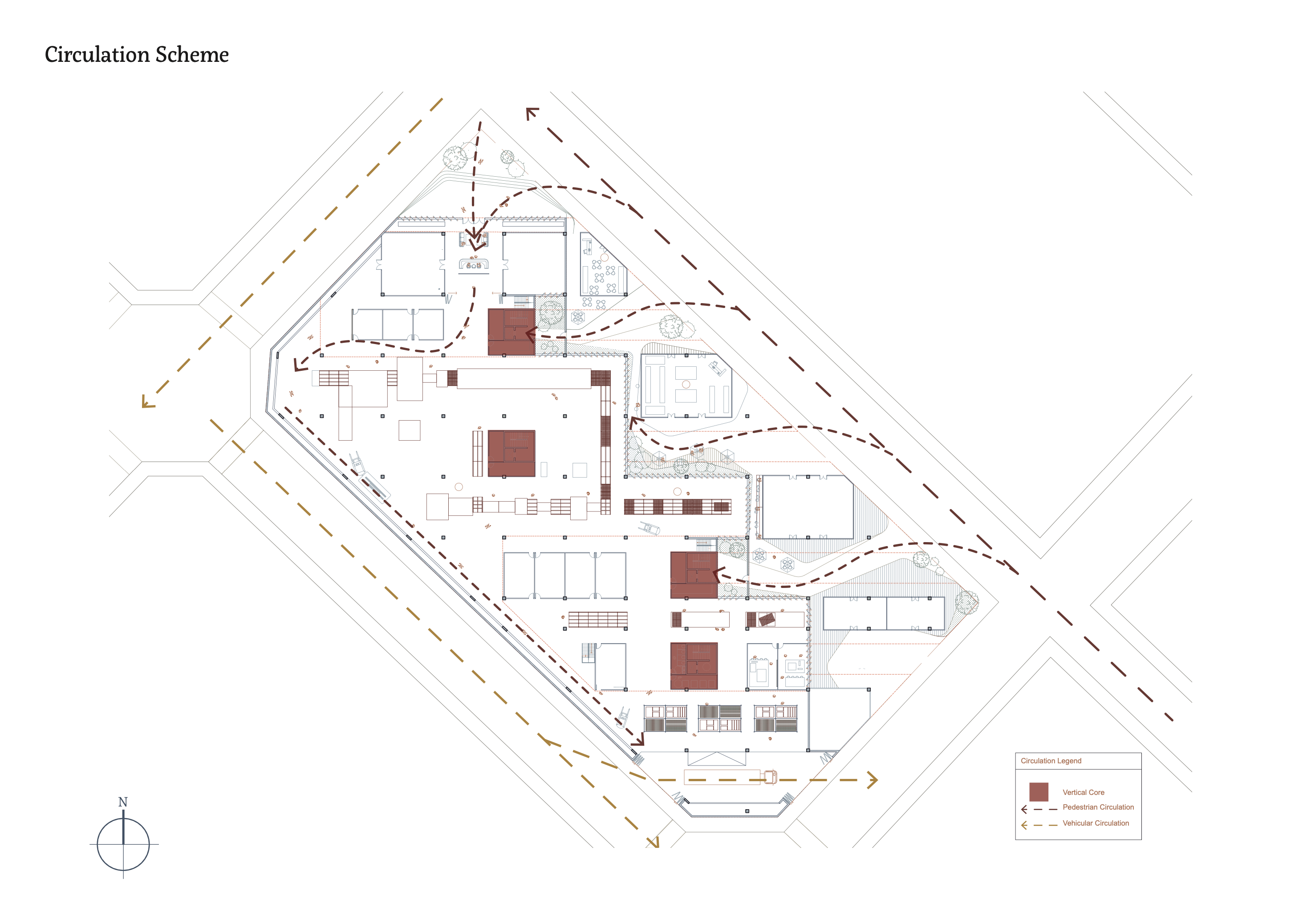
The basement is utilised for both the industry and residential spaces in terms of services and storage spaces.
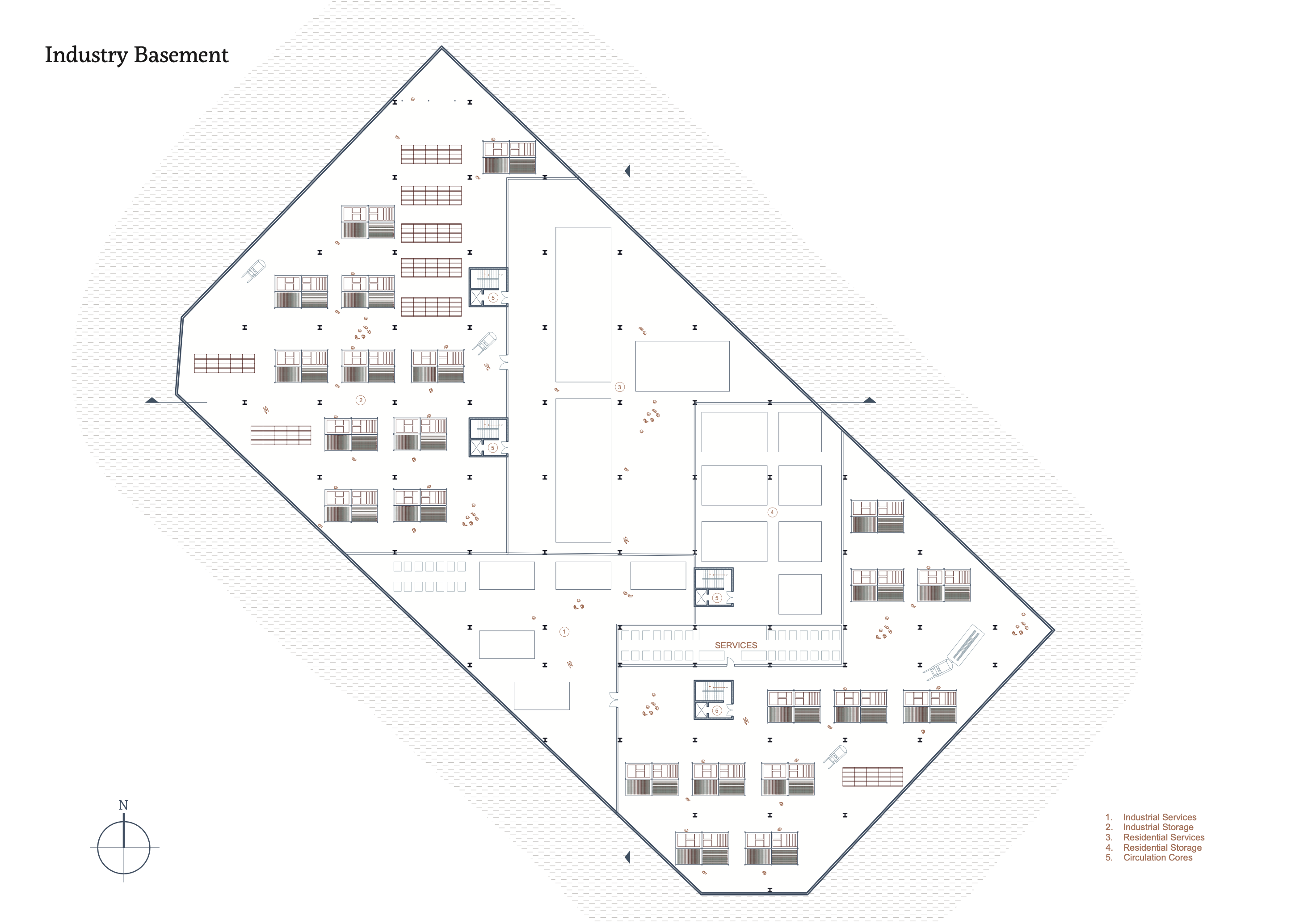
Residential Design
The housing is designed to be a mixed housing typology. It consists of three different housing typologies. The ground floor of the housing also serves as common spaces for the residential zone. In the common spaces one can find garden patches, herb gardens, outdoor decks and play areas.
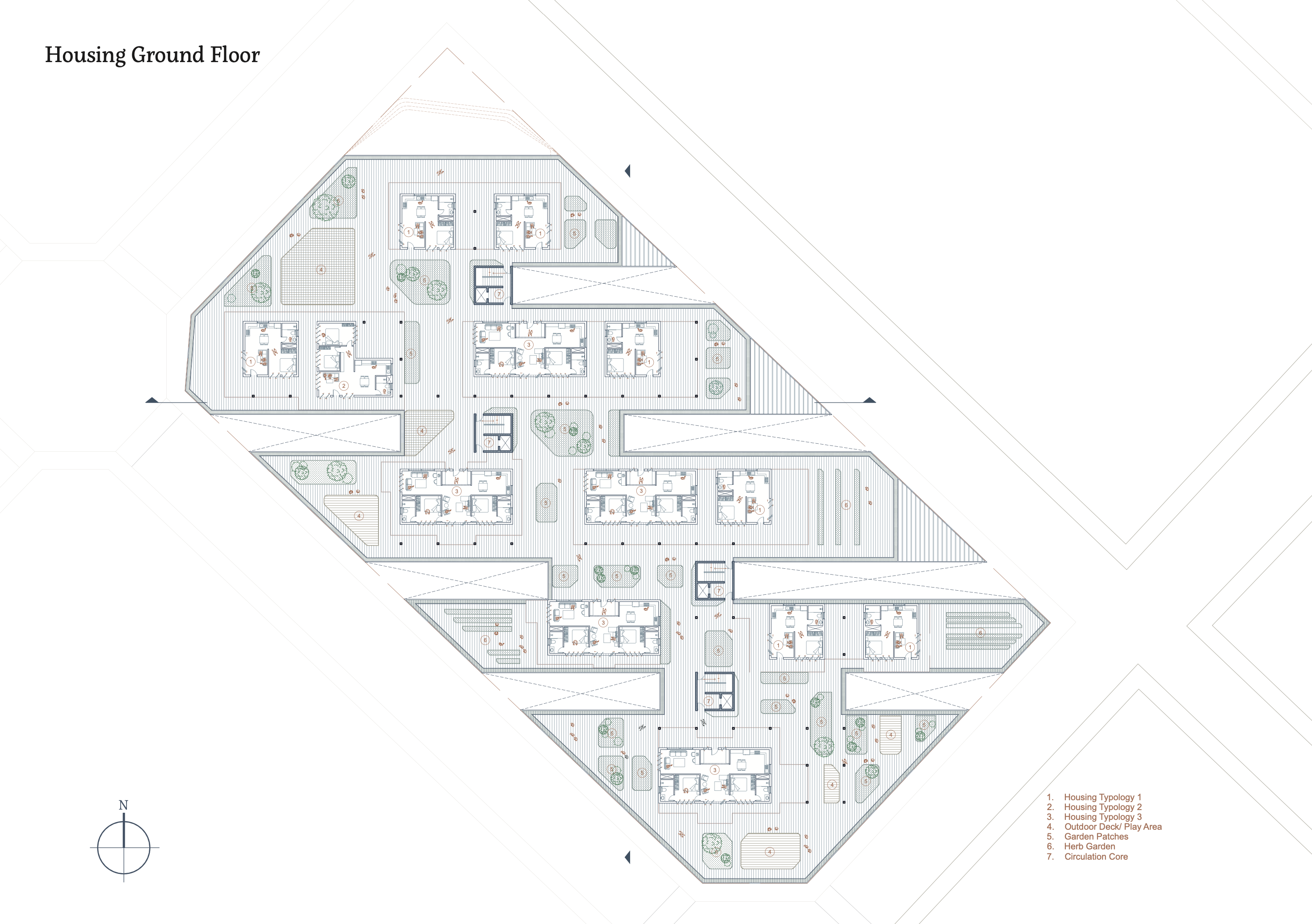
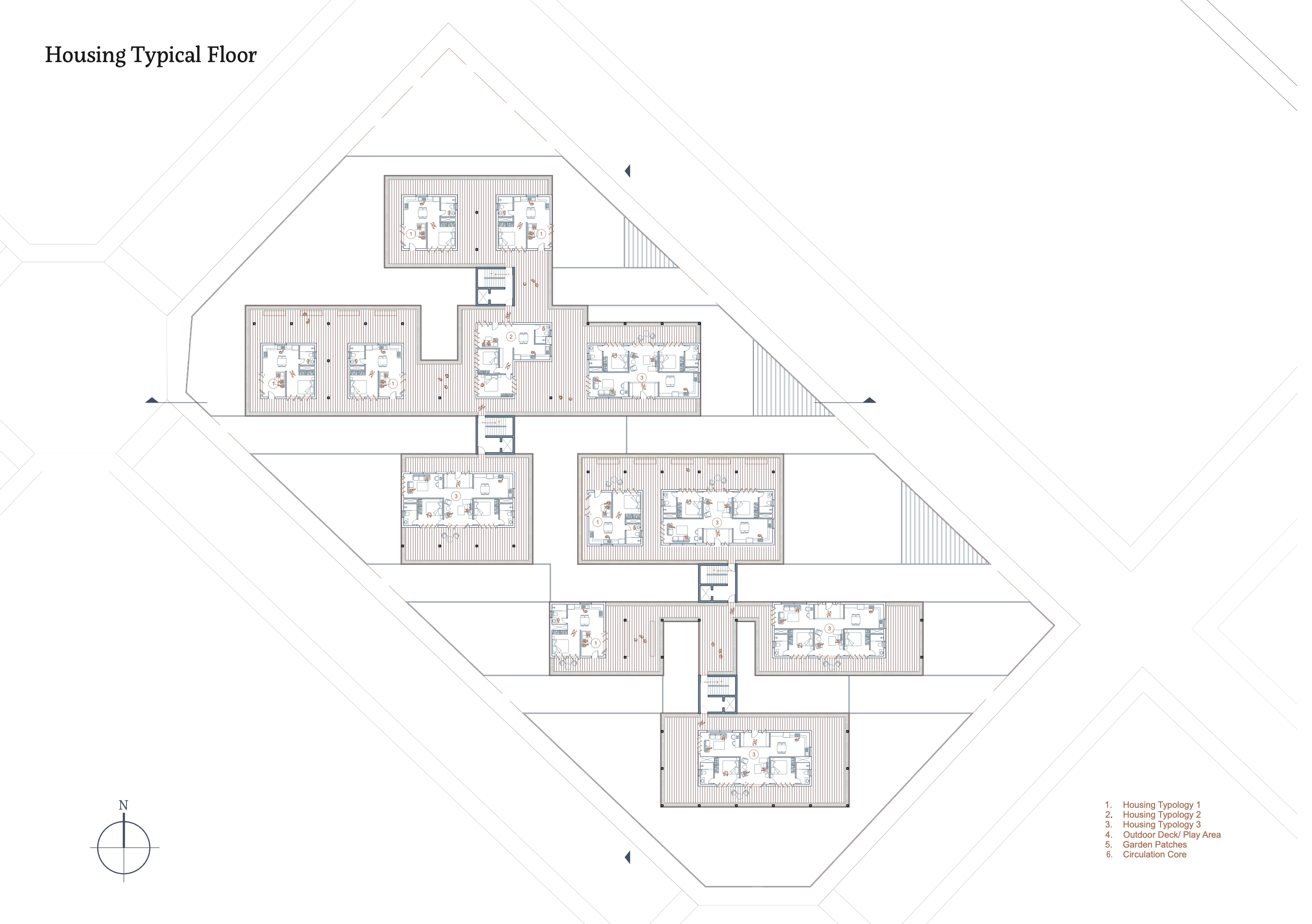
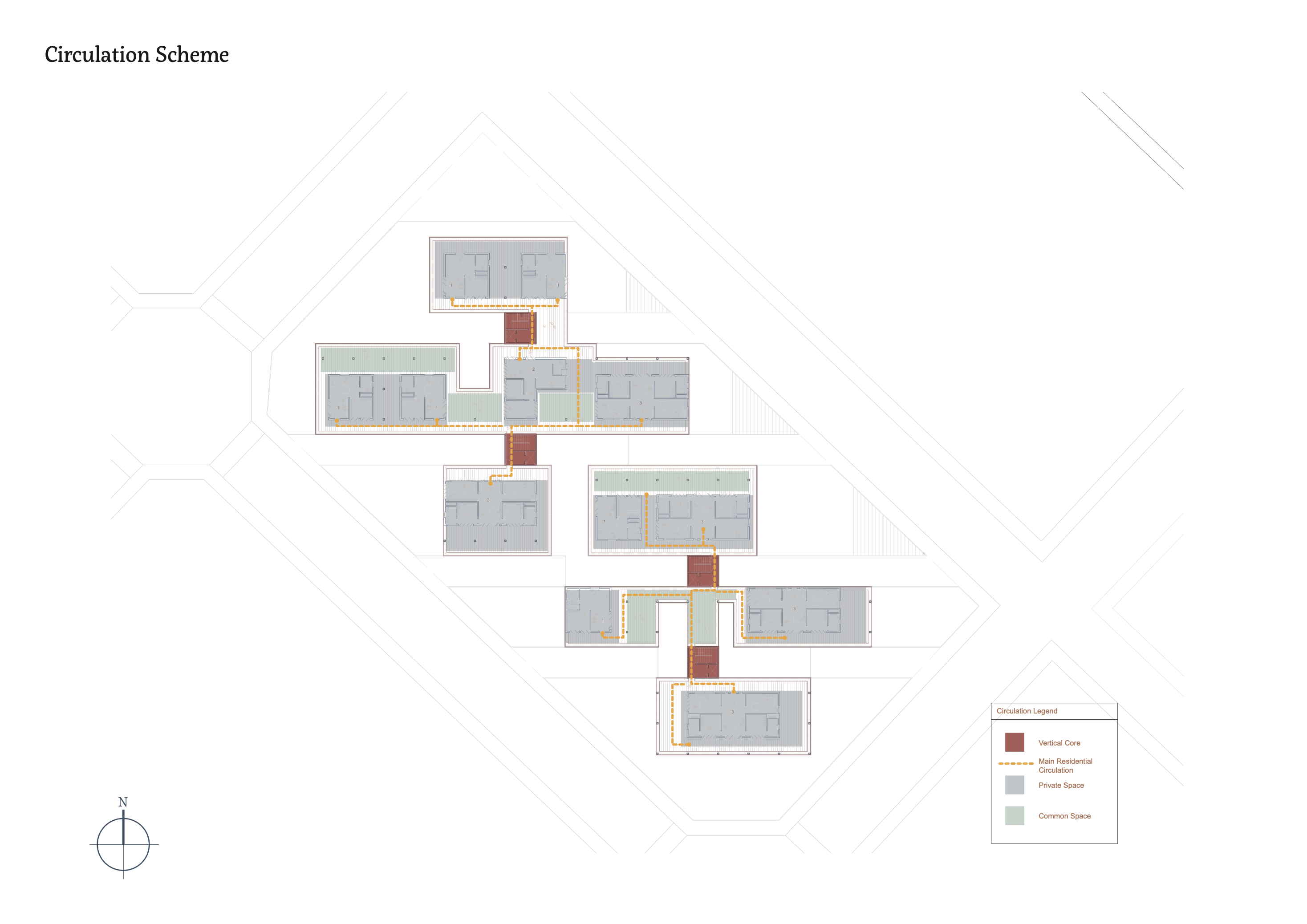
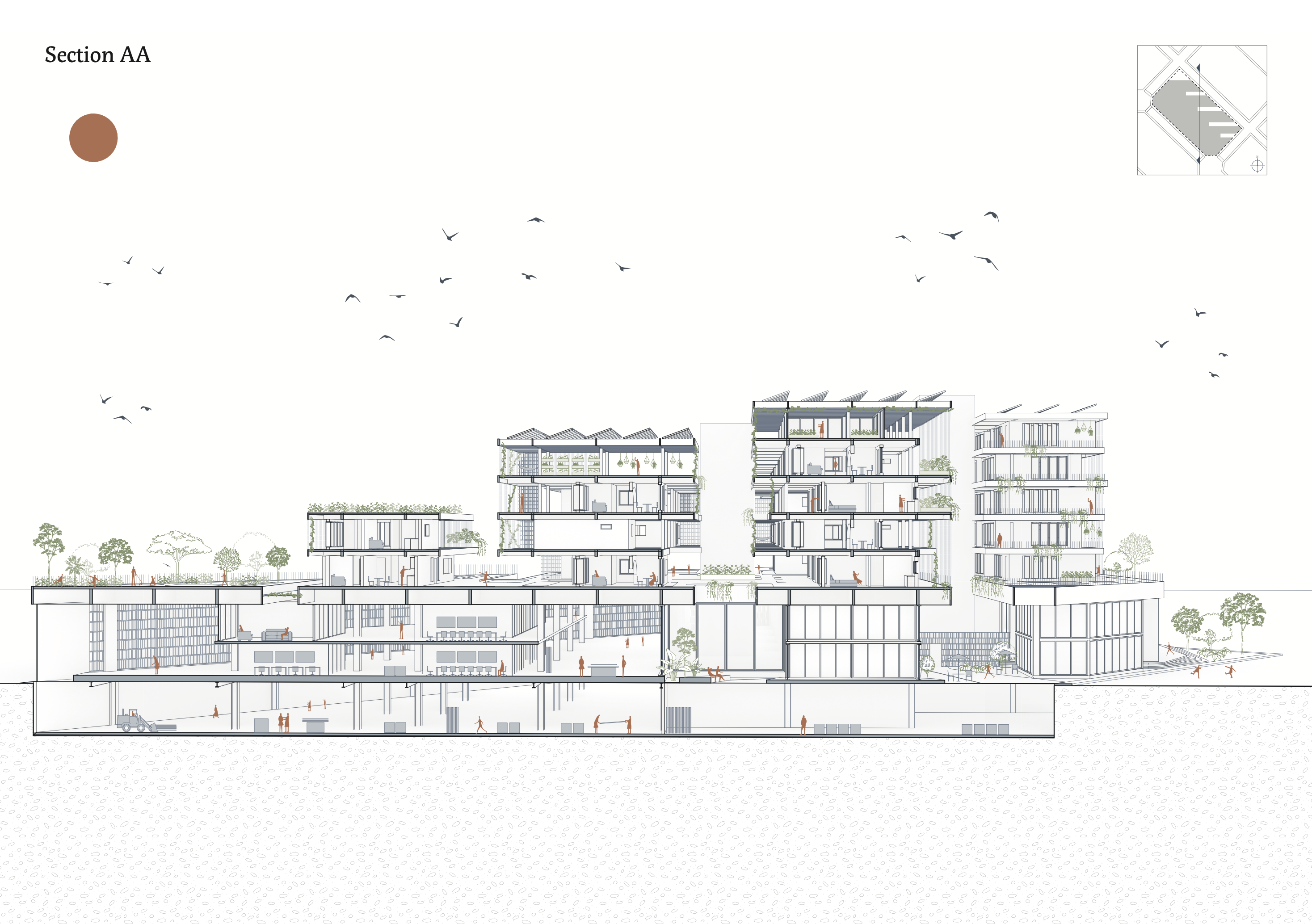
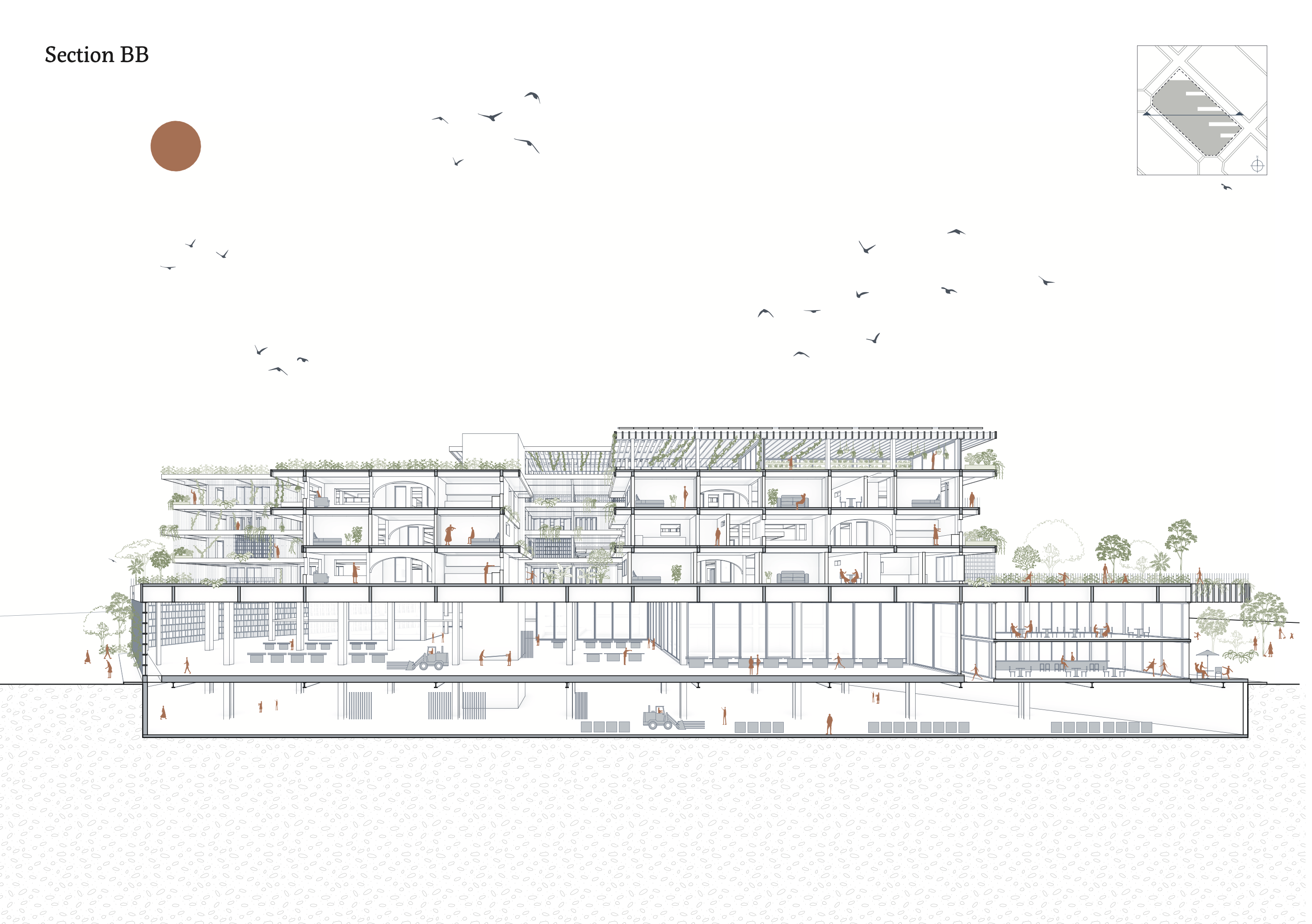
Structural Joineries
In the industry, the slabs sit on top of the rectangular beams and the beams are then covered with a “ceiling” underneath, allowing for the space in between to be used for utilities. In the residences, the beams are an upside-down T-shape, with the slabs overlapping the “T”.

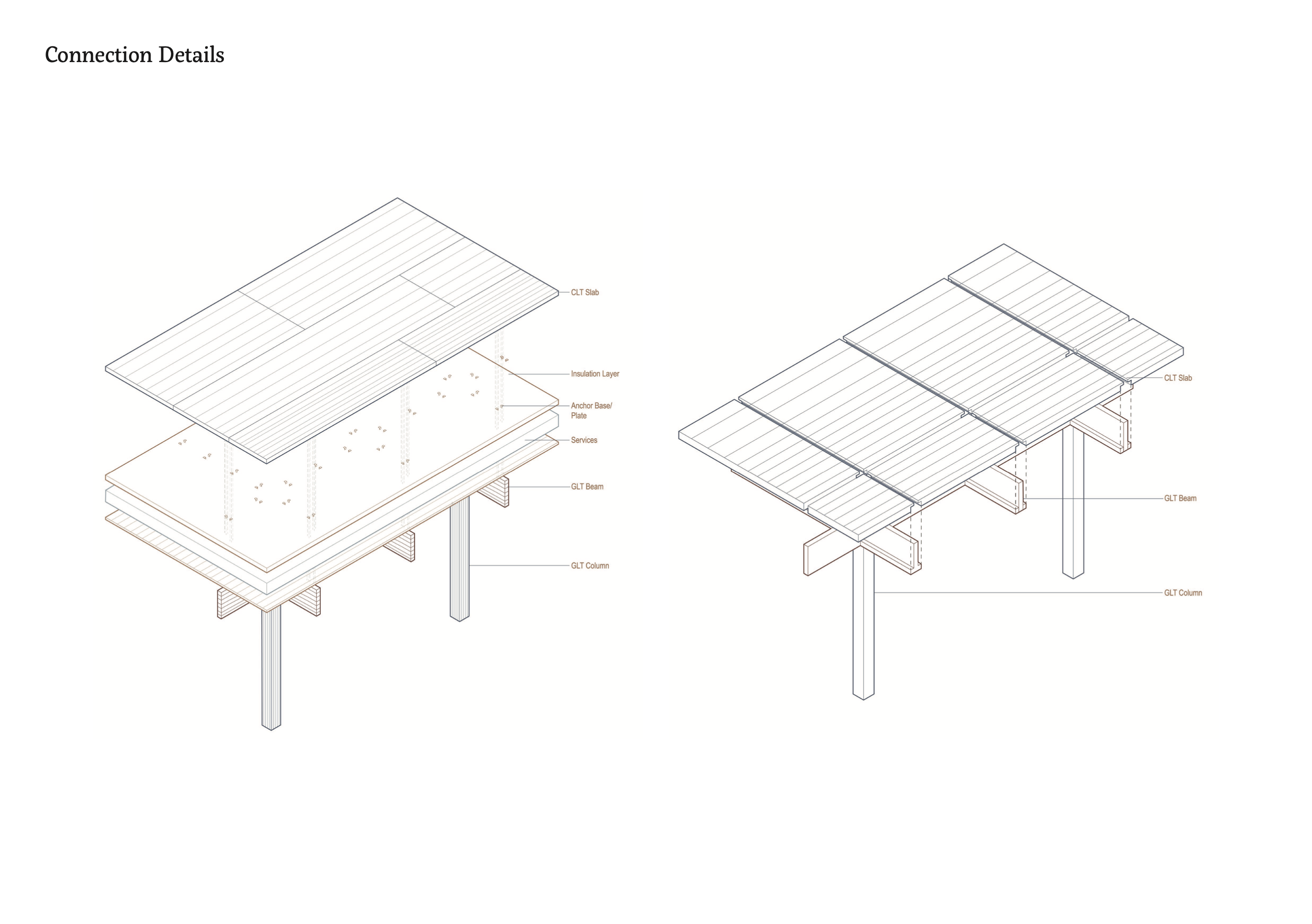
Envelope Design
The envelope design is based on utilising ceramic tiles and hemp ropes to create a secondary facade for the southern, western and eastern sides of the design. The secondary facade acts as a buffer to diffuse daylighting as well as to increase thermal mass. The combination of ceramic tiles and hemp ropes are accentuated with plants that grow and show foliage in the summer and lose their foliage during the winter. This allows light to be diffused during the summer and to allow for heat gain during the winter.
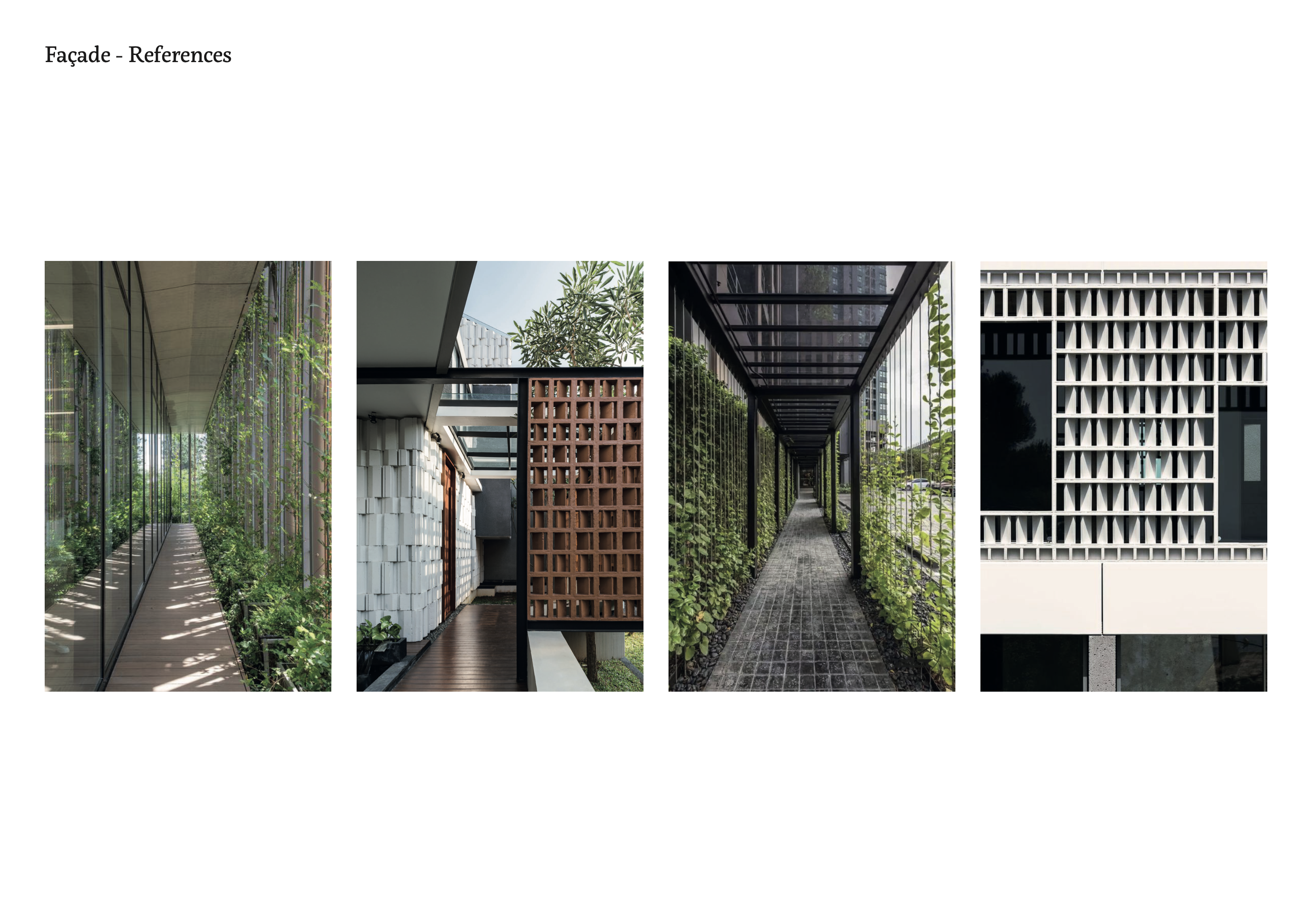
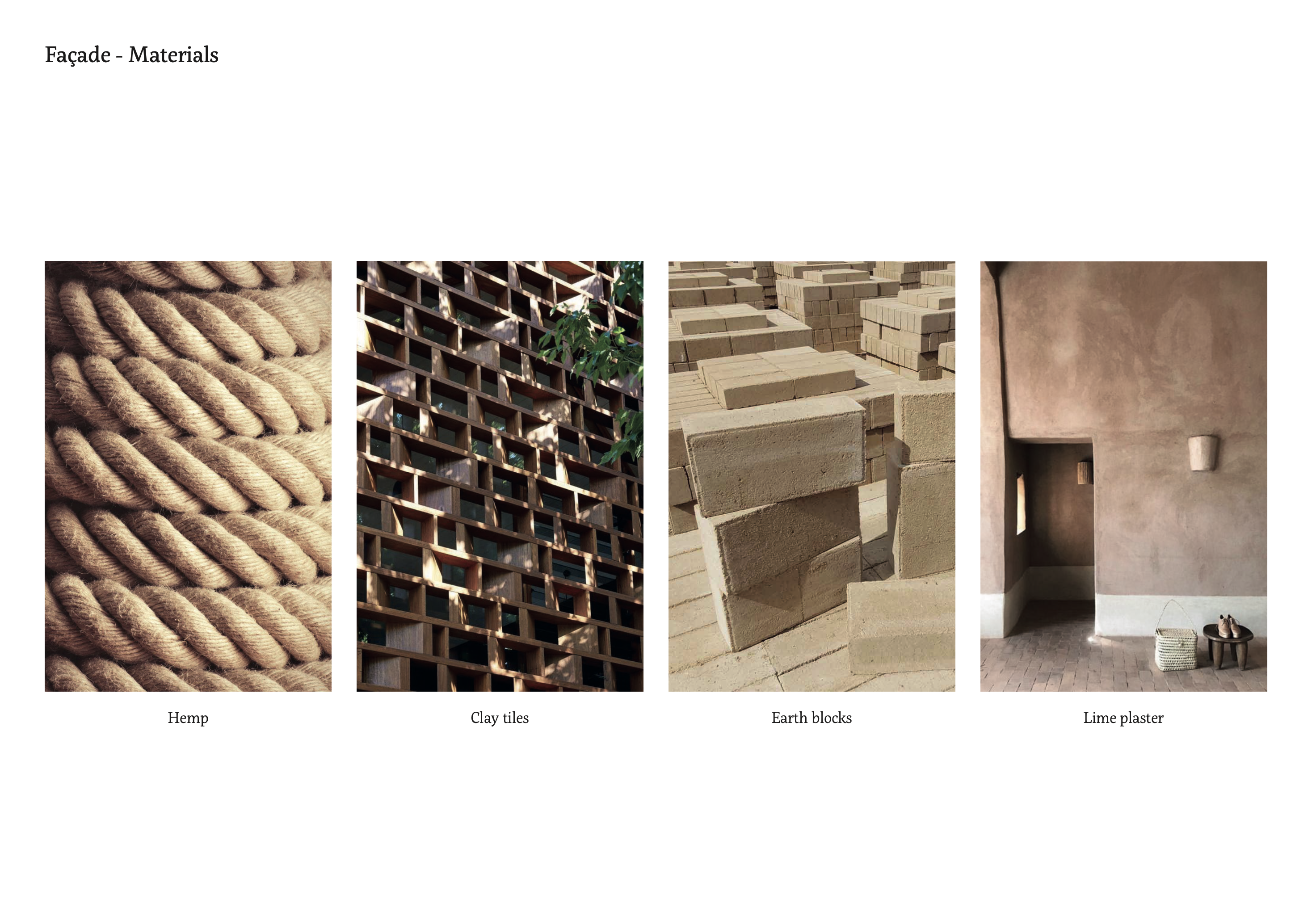
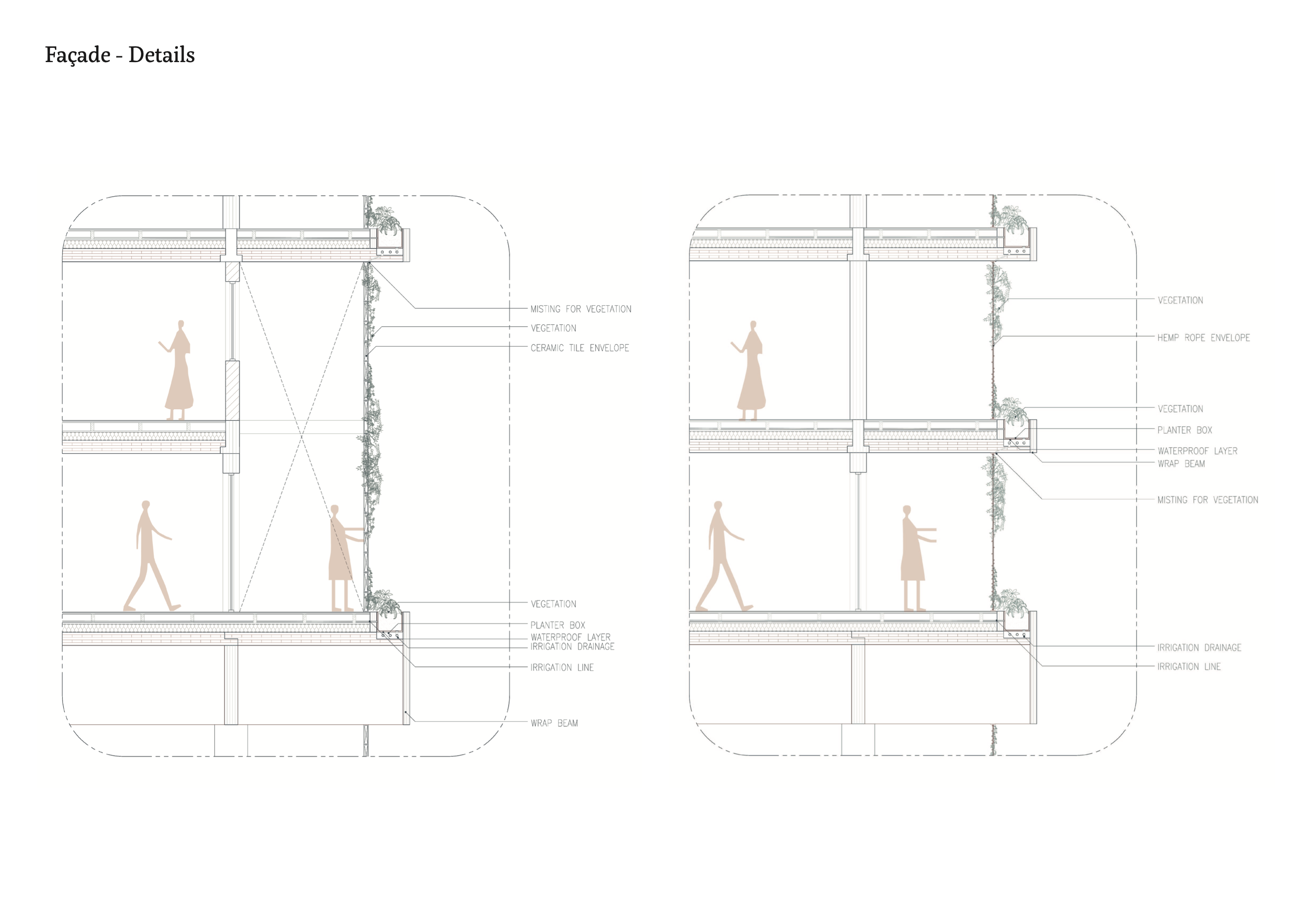
Water Management
The initial water consumption on site occurs through the use of municipal potable water. This municipal water consumption is reduced by 57% by devising a recycle system of both grey-water and black-water. Used water or Grey/Black-water is treated through a bio-filter and sewage treatment plant to obtain reusable water. This recycled water is used in the built form and vegetated spaces for WCs, Green house irrigation, Landscape irrigation, and other miscellaneous uses.
The diagrams below shows an overview of the water management system of our building:
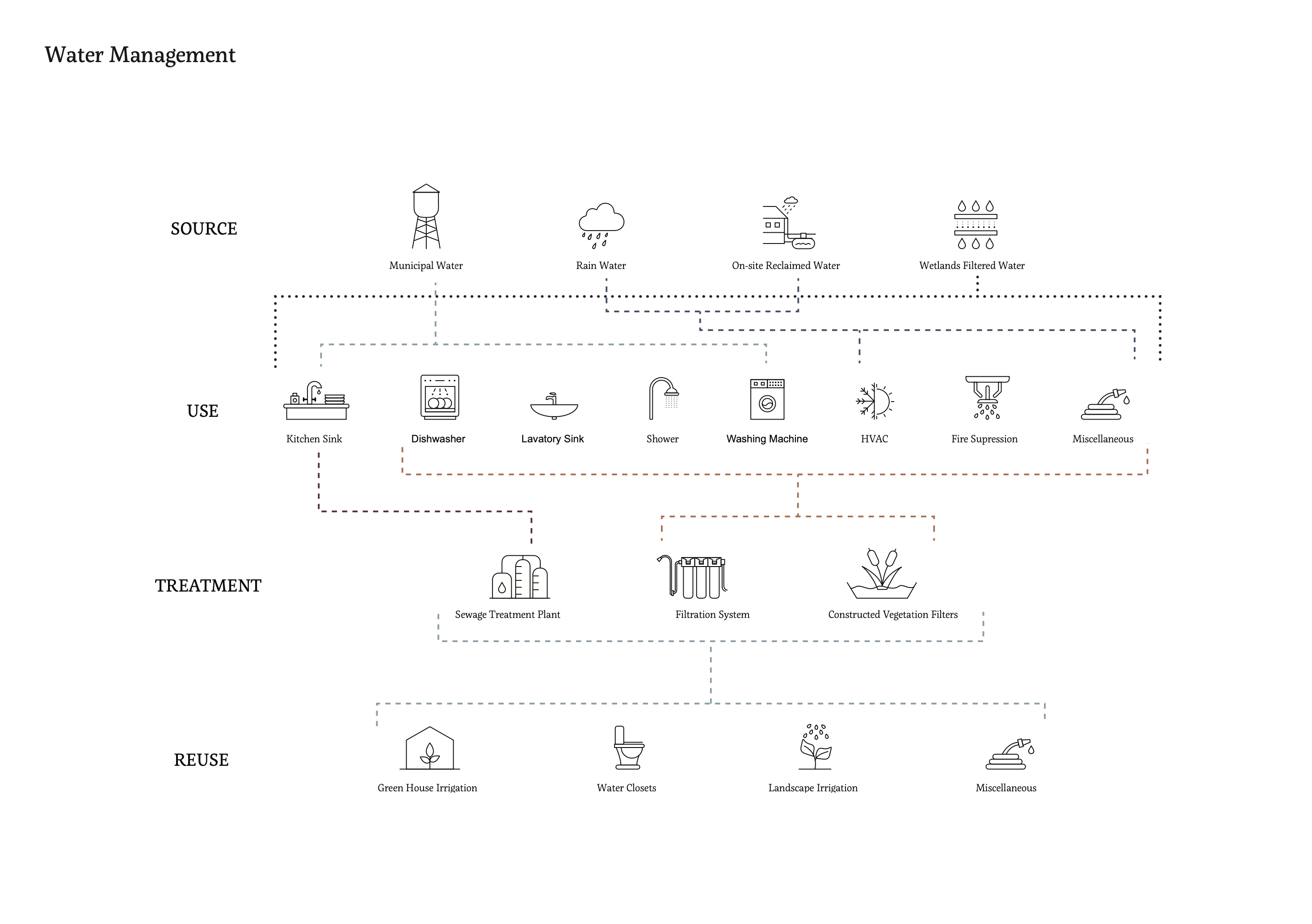
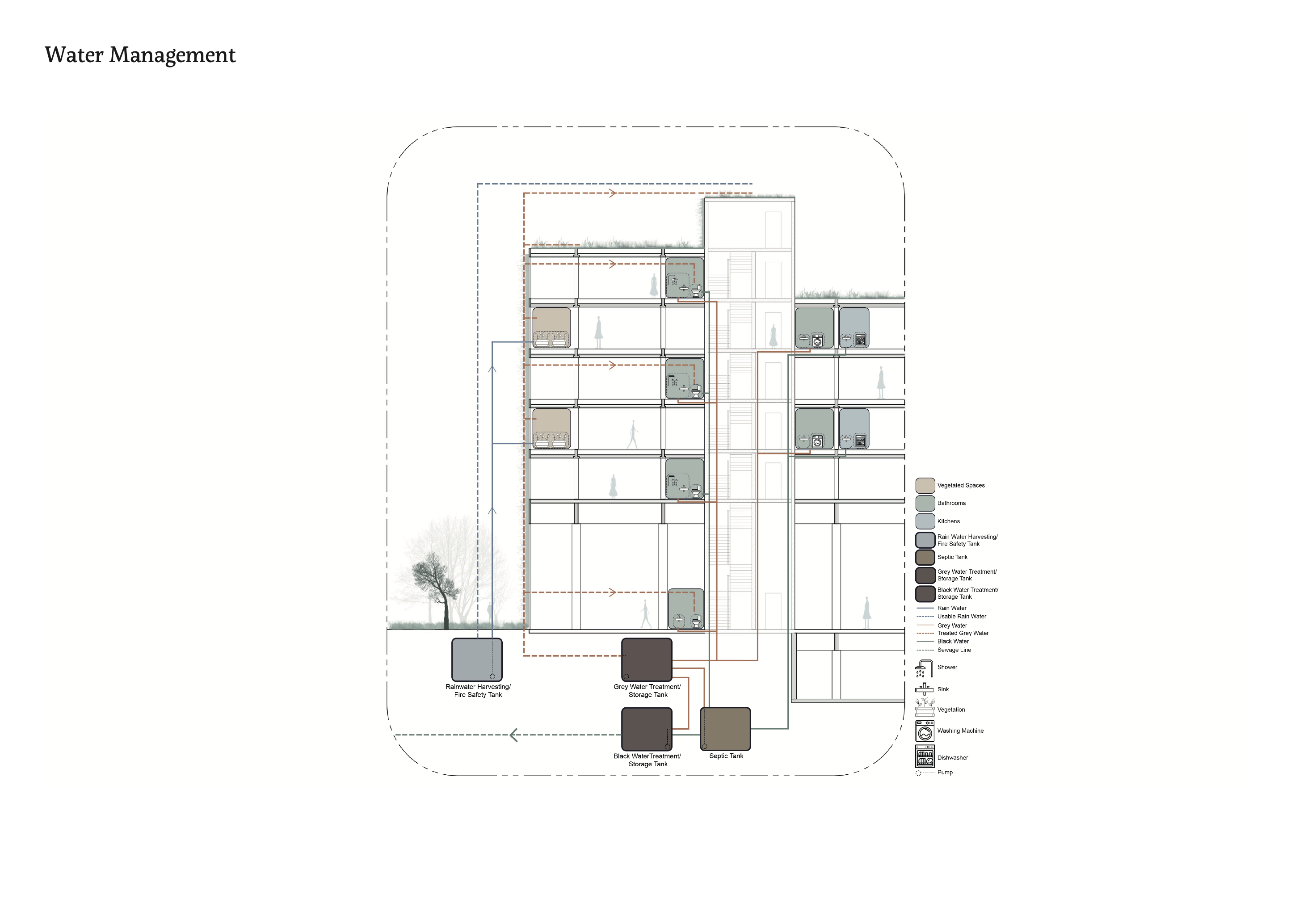
Renders







